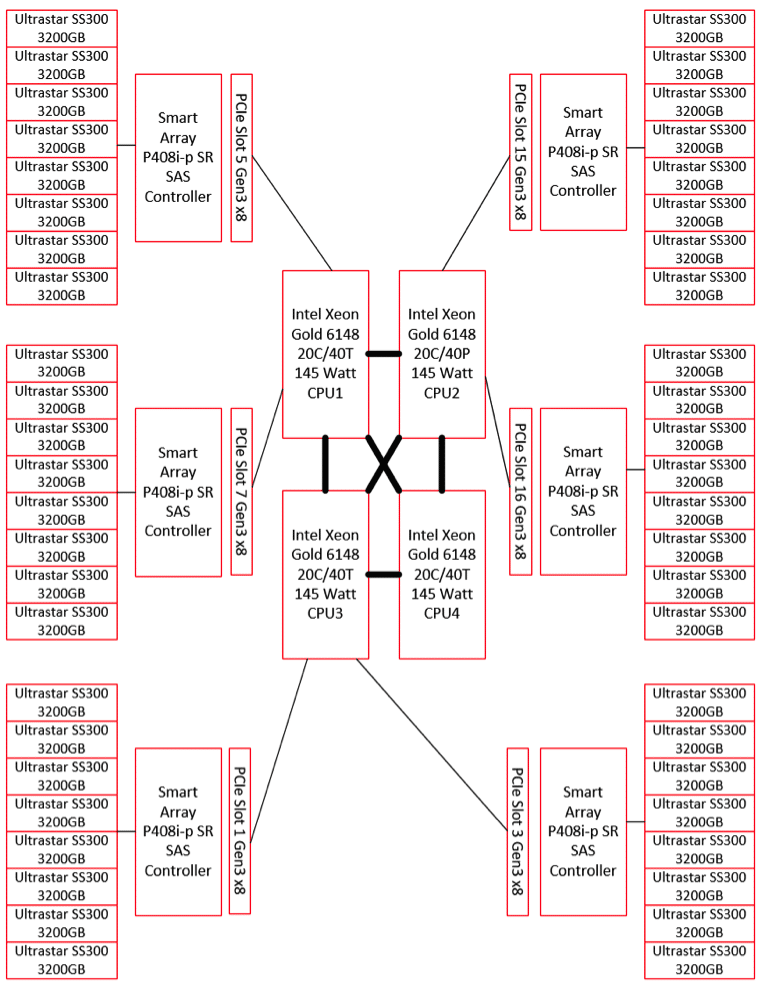New Record-Breaking SQL Server Data Warehouse Fast Track Solutions
The sun has officially set on the old Fusion-io®/SanDisk® ioMemory® PCIe Flash SSDs and its previous SQL Server Data Warehouse Fast Track performance and capacity records. But don’t worry! Western Digital and HPE are delivering the next generation solutions with groundbreaking performance.
A little bit of background: Fusion-io developed a groundbreaking fusion of NAND flash memory and storage intelligence devices mounted on PCIe carrier cards. Over a quarter million Fusion ioMemory devices were shipped to thousands of global customers. In 2014, SanDisk acquired Fusion-io and ioMemory continued to be marketed under the SanDisk brand name. In 2016 SanDisk was acquired by Western Digital who also acquired solid-state technology leaders such as HGST, Virident, and sTec. With innovation up and down the stack, several new flash products have launched since the completion of these strategic acquisitions ranging from SSDs all the way to storage platforms and fully-featured all-flash systems.
[Tweet “We did it again! New record-breaking #SQLServer reference architectures with @HPE”]
Today we are highlighting one of the newest additions to our SAS SSDs portfolio, the ultra high-performance Ultrastar® SS300 and its SQL Server Data Warehouse Fast Track record-breaking performance and rated capacity. In these SQL Server Data Warehouse Fast Track solutions, forty-eight Ultrastar SS300s provide the storage performance to achieve the results highlighted in this blog post.
Hardware Configuration
Both solutions were tested on the same HPE ProLiant DL580 Gen10 server. The 165TB rated Data Warehouse Fast Track solution leveraged the Intel® Xeon® Gold 6148 Processor while the 195TB calculated Data Warehouse Fast Track solutions used the Intel Xeon Platinum 8180 processor.
HPE DL580 Gen10
- 48 x 3200GB 3DWPD Ultrastar SS300 SSDs
- 6 x HPE Smart Array P408i-p SR
- SQL Server EE 2017 – Microsoft SQL Server 2017 (RTM) – 14.0.1000.169
- Windows Server 2016 SE (10.0.14393 N/A Build 14393)
- HPE BIOS version “HPE U34”
165TB Solution
- 3TB RAM (236GB allocated to SQL Server to force physical I/O)
- 4 x Intel Xeon Gold 6148 2.4GHz (4 socket/80 cores/160 threads)
195TB Solution
- 4TB RAM (236GB allocated to SQL Server to force physical I/O)
- 4 x Intel Xeon Platinum 6148 2.5GHz (4 socket/112 cores/224 threads)
Storage Configuration
Forty-eight Ultrastar SS300 SSDs connect to six Smart Array controllers which feed into three processors via Gen3 x8 PCIe slots. Each Smart Array controllers hosts eight Ultrastar SS300 SSDs. Under synthetic load, peak performance reached 41GB/s. Each controller’s peak performance reached 6.83GB/s.

Breaking Down the Metrics
Both configurations take full advantage of the astounding storage configuration. The 195TB solution demanded more I/O as the Intel Xeon Platinum 8180 processor has more power and cores. This additional performance pushes the storage performance more than the Intel Xeon Gold 6148 processor.
Storage Performance

SQL Server Data Warehouse Fast Track Certification Comparison

Summary – Record Breaking Performance and Capacity at Your Fingertips
To date, these SQL Server Data Warehouse Fast Track solutions provide the most performance and user capacity for Intel Purley-based solutions. For the most demanding data warehouse workloads, these Microsoft-validated, pre-configured solutions can offer high bandwidth of 24.5GB/s while maintaining <500 microsecond latency for accelerating business insights and faster results. The rated User Data Capacities of 165TB and 195TB provide enough storage for the most massive SQL Server data warehouses or large database consolidation projects so you can harness the power of data to find new opportunities and transform your business.
Download the DWFT Reference Architecture White Papers
- 165TB Reference Architecture
- 195TB Reference Architecture
What Happened to Fusion-io devices?
Interested in learning more about the successor product to the Fusion ioMemory PCIe SSDs? Read the white paper.




